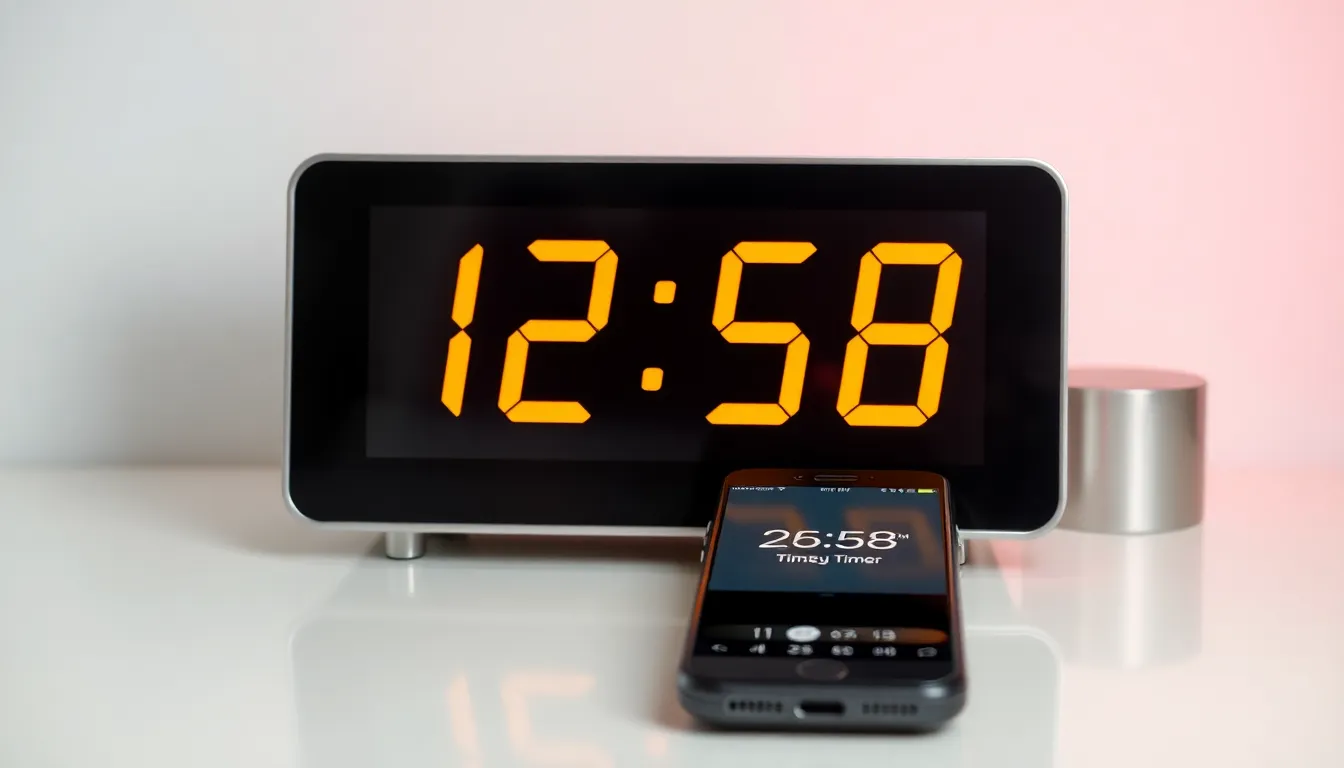Table of Contents
ToggleTime can be a tricky little devil. One moment you’re sipping your coffee, and the next, you’re frantically wondering how long till 2:58. Whether it’s that crucial meeting, a favorite show, or a snack break, knowing the countdown can feel like a race against the clock.
Understanding Time Calculation
Understanding how to calculate time intervals enhances awareness and reduces stress related to schedules. It enables individuals to plan efficiently for upcoming events and activities.
Importance of Time Awareness
Time awareness plays a crucial role in daily life. Recognizing how long it takes to reach specific moments fosters better planning. Effective time management leads to improved productivity and reduced anxiety. People who monitor time effectively typically experience less stress when anticipating events, whether for work or personal commitments. Staying informed about time allows for greater flexibility and adaptation in activities, leading to overall satisfaction.
Common Time Related Queries
Individuals frequently ask questions about time calculations. Common inquiries include how much time remains until specific events, the duration of tasks, and time zone differences. Queries often arise regarding converting hours into minutes or determining the best time for meetings across different regions. Addressing these questions enables clearer understandings and helps streamline routines. Implementing effective strategies for answering time-related inquiries can significantly enhance personal and professional planning.
Methods to Calculate Time

Understanding how to calculate time effectively plays a crucial role in managing schedules. Various methods exist to determine how much time is left until events.
Using Clock and Watch
Clocks and watches offer a straightforward way to measure time. They display hours and minutes clearly, allowing for quick calculations. By observing the current time, a person can subtract it from the target time, such as 2:58. For example, if the current time is 2:30, 28 minutes remain until 2:58. Regularly referencing a clock helps develop an instinct for time management.
Digital Tools and Apps
Numerous digital tools and apps simplify time calculation. Smartphones come equipped with built-in calculators that quickly handle the math. Third-party apps may provide countdown features, showing the exact time left until an event. Additionally, calendars allow users to set reminders and alerts for approaching deadlines. Many of these tools integrate with personal schedules, creating a seamless experience for managing time efficiently.
Practical Applications
Understanding how long until 2:58 offers practical benefits in daily life and specific scenarios. Time awareness improves efficiency and reduces stress for individuals in various situations.
Everyday Situations
Knowing the remaining time until 2:58 helps in managing daily tasks. Individuals might calculate how many minutes left until an appointment and adjust their routines accordingly. Rushing to finish tasks often leads to mistakes or missed deadlines. People can use timers or alarms to track precise intervals, ensuring timely arrivals. Coordinating with others becomes easier when everyone is aware of the remaining time for shared tasks, like preparing a meal or heading out together.
Event Planning Scenarios
In event planning, calculating time until 2:58 aids in scheduling activities. Guests appreciate knowing when to arrive for parties or meetings, allowing hosts to prepare adequately. Organizers can allocate specific windows for speeches, meals, or activities based on the remaining time, ensuring smooth transitions between event segments. Effective timing guarantees attendees engage without feeling rushed or uninterested. Educators benefit similarly by planning classroom discussions around time constraints, maximizing instructional efficiency.
Tips for Accurate Time Tracking
Effective time tracking enhances productivity and reduces anxiety. Mastering specific techniques can significantly improve time management.
Time Management Techniques
Prioritizing tasks helps individuals focus on important deadlines. Utilizing calendars allows for easy visualization of tasks and events. Setting timers creates urgency and motivates completion of tasks within set periods. Breaking projects into smaller steps simplifies the planning process. Establishing a routine provides structure and promotes consistency in managing time.
Avoiding Common Mistakes
Underestimating time required for tasks leads to unnecessary stress. Overcommitting can overwhelm individuals and disrupt schedules. Forgetting to allocate time for breaks affects focus and productivity. Ignoring time zone differences may result in missed meetings or appointments. Neglecting to review daily or weekly progress hinders improvement in time management practices.
Understanding how long until 2:58 can significantly impact daily routines and overall productivity. By mastering time calculations and utilizing available tools, individuals can minimize stress and enhance their efficiency. Whether it’s for personal tasks or professional commitments, being aware of the time remaining allows for better planning and execution.
Embracing effective time management strategies not only streamlines activities but also fosters a sense of control over one’s schedule. With the right approach to tracking time, anyone can navigate their day with confidence and ease.







